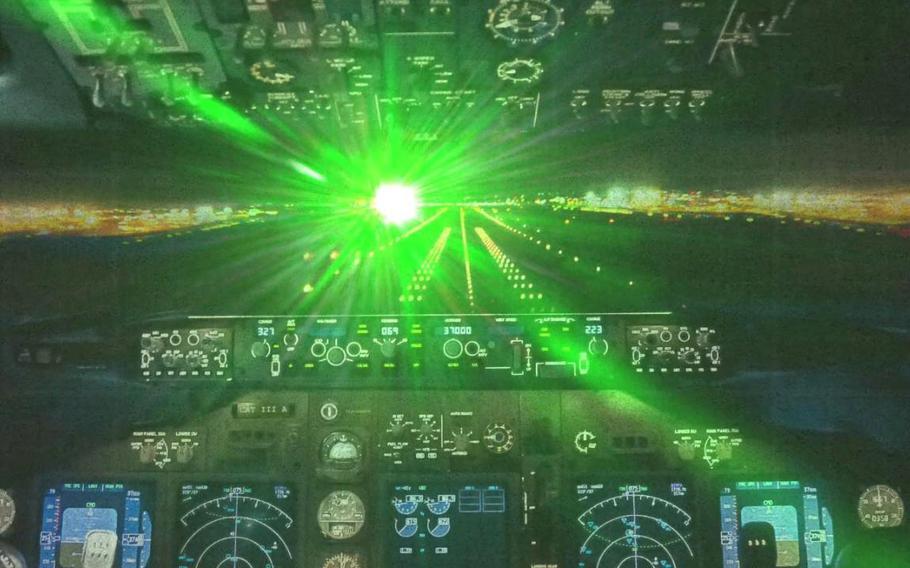
Lasers pointed at aircraft can create a major safety hazard for pilots, 31st Fighter Wing officials at Aviano Air Base in Italy said recently, in response to a rise in such incidents. (Federal Aviation Administration)
AVIANO AIR BASE, Italy — The 31st Fighter Wing has seen a surge of incidents this year involving laser pointers directed at aircraft while flying, actions that can disorient and endanger crew members.
The 13 incidents show “unusually high” numbers, said Maj. Ben Weigold, the wing’s chief of safety at this base in northeastern Italy. Four such instances occurred last year, Air Force officials said.
The number may actually be low due to unreported incidents. F-16 pilots may not notice being targeted by lasers due to their speed, unlike helicopters and other aircraft, Weigold said.
Most of the targeting is taking place during training missions that call for low-flying aircraft.
Pilots are directed to change their flight path after being targeted with a laser, which causes training plans to get disrupted, said Master Sgt. Miguel Gibson, a base flight safety manager.
The effect of a laser beam shining in a pilot’s eyes is similar to a camera flash going off in a pitch-black car at night, according to an Air Force Office of Special Investigations statement.
The sudden disorientation can prevent the pilot from maintaining control of the aircraft.
To spread awareness of the dangers, police helicopter pilots with the VIII Flight Department of Florence have been visiting schools to talk to students, the Aviano OSI office said.
Reports of aircraft targeted by laser pointers are also up in the United States, according to Federal Aviation Administration figures. They received 9,000 such reports in 2022, a 41% rise over the previous year.
Shining a laser may be classified as an illegal “attack on transport safety,” according to Italy’s state police website. A conviction under that classification carries a penalty of up to five years in prison, or up to 10 years if the act results in a disaster.
Figures on how many laser incidents occurred throughout the Air Force this year weren’t immediately available Thursday. But OSI cited an overall increase in an October statement.
Meanwhile, the service’s Life Cycle Management Center is upgrading protective eyewear for crew members in order to mitigate the problem.
“The consequences of getting lasered without having proper protection could not only prevent the pilot from flying and landing an aircraft safely, but it could also cost them their career,” Capt. Pete Coats, the program’s lead manager, said in a November statement.
The first-of-its-kind eyewear provides both laser and ballistic protection and is expected to be fielded by 2027, the statement said.